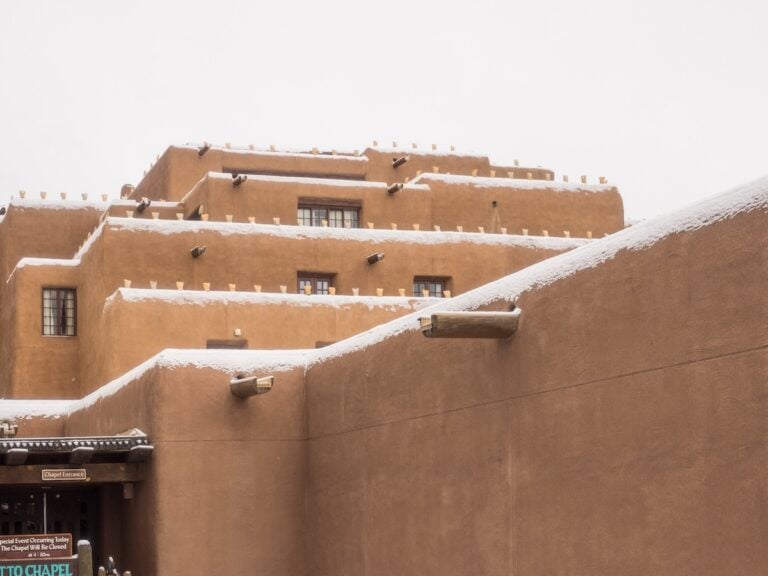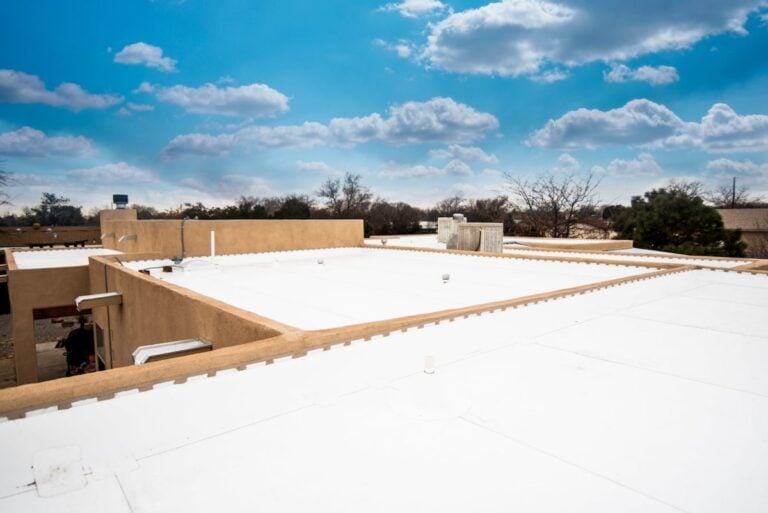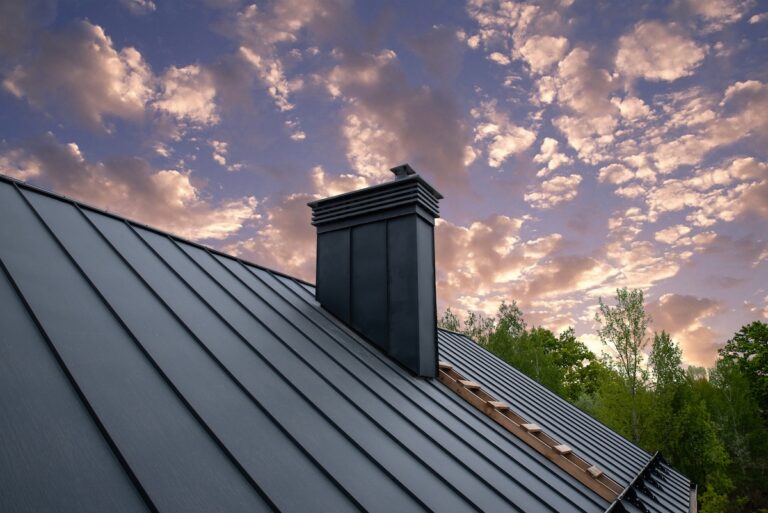Roof Inspection Cost: What to Expect From Your Roofer in 2025
Roof inspections are essential for maintaining the integrity of your home or business. But what exactly does a roof inspection cost in 2025, and what factors influence the pricing? Whether you’re a homeowner looking to prevent damage or a business owner ensuring compliance, understanding the cost breakdown can help you make informed decisions.
This guide will cover:
- The average roof inspection cost
- Factors that impact roof inspection pricing
- Why professional inspections are worth it
The Average Roof Inspection Cost

The cost of a roof inspection can vary based on the size, type, and condition of your roof, as well as your location. On average:
- Standard Roof Inspection: $100 to $400
- Drone-Assisted Inspection (for hard-to-reach areas): $300 to $600
- Infrared Inspection (to detect hidden issues): $400 to $1,000
These prices are a small investment compared to the thousands of dollars you could save by catching issues early.
Types of Roof Inspections
Different inspection types cater to various needs. Here’s an overview:
- Visual Inspections: A contractor checks for visible issues like missing shingles or damaged flashing—ideal for routine maintenance.
- Drone-Assisted Inspections: Drones capture aerial images to inspect hard-to-reach areas, perfect for large or steep roofs.
- Infrared Inspections: Thermal imaging detects hidden leaks or moisture, great for spotting issues beneath the surface.
- Structural Inspections: Examines the roof’s framework to ensure it can handle heavy loads, suited for older buildings or extreme weather.
6 Factors That Impact Roof Inspection Cost

When it comes to roof inspection costs, several key factors play a role. Here are the most common ones:
1. Roof Size
The size of your roof plays a significant role in determining the cost of an inspection. Larger roofs naturally require more time and effort to thoroughly examine, which can drive up the overall price. For instance, inspecting a smaller 1,000-square-foot roof is likely to be quicker and less expensive compared to a larger 3,000-square-foot roof. The first step in any roofing project, including knowing how to measure a roof for shingles, or any other roof type, is accurately determining its size. The increased labor and time needed for bigger roofs make them more costly to inspect.
2. Roof Type and Material
The type of roof and the materials it’s made from can greatly affect the inspection cost. Certain roofing materials, such as tile or metal roofs, require specialized tools and expertise to inspect properly, adding to the cost. On the other hand, roofs made of simpler materials or with straightforward designs, such as flat or simple-sloped roofs, are typically easier and cheaper to assess. However, steep-sloped or intricate roof designs demand more effort and care, often resulting in higher inspection fees.
3. Level of Accessibility
Accessibility is another key factor that impacts inspection costs. Roofs that are difficult to reach may require the use of specialized equipment, such as drones or safety harnesses, to ensure a thorough and safe inspection. This additional equipment and effort can increase costs. For example, flat commercial roofs are generally easier to access and inspect, making them less expensive. In contrast, steeply sloped residential roofs or roofs located on tall buildings often require extra precautions and tools, driving up the inspection price.
4. Extent of Roof Damage
The condition of your roof also plays an essential role in determining inspection costs. If your roof has significant damage, such as missing shingles, visible leaks, or areas of structural concern, inspectors may need to spend more time conducting a thorough assessment. Identifying and documenting the full extent of the damage can be time-consuming, which can increase the cost of the inspection. A roof with minimal wear and tear, on the other hand, will likely require less time to evaluate and cost less to inspect.
5. Inspection Type
There are different types of roof inspections, and the one you choose will have a direct impact on the cost. Basic visual inspections are the most affordable, as they involve a surface-level evaluation of the roof’s condition. However, more advanced inspection techniques, such as thermal imaging, are more expensive. Thermal imaging can detect hidden moisture, insulation issues, or structural problems that aren’t visible to the naked eye. While these advanced methods come at a higher price, they provide a more comprehensive understanding of your roof’s condition.
6. Geographic Location
Your geographic location can also influence the price of a roof inspection. Inspection costs often vary depending on the region and local factors. For instance, areas with harsh weather conditions, such as heavy snow, rain, or extreme heat, may have higher inspection rates due to the increased wear and tear these climates cause on roofs. Additionally, the cost of living in your area or the availability of qualified roof inspectors can also affect pricing, with more competitive markets generally offering lower rates.
Why Professional Roof Inspections Are Worth the Cost

Skipping regular roof inspections might seem like an easy way to save money, but it can lead to costly repairs down the road. Here are a few reasons why investing in professional inspections pays off:
1. Catch Problems Early
A professional roofer can identify potential issues with your roof long before they escalate into significant problems. Things like leaks, weak spots, or weathering can be easy to miss unless you have the trained eye of an expert. Addressing these concerns early not only saves you from costly repairs down the line but also prevents further damage to your property. Proactive maintenance can make all the difference in protecting your home and your budget.
2. Extend Roof Lifespan
By scheduling regular inspections and maintenance, you can significantly extend the lifespan of your roof. Over time, roofs naturally face wear and tear due to exposure to the elements, but consistent upkeep can slow this process. A well-maintained roof lasts longer, helping you avoid the need for premature replacement and ensuring you get the best value from your investment. It’s a simple way to protect one of the most important parts of your home.
3. Ensure Safety and Compliance
Roof inspections aren’t just about spotting damage—they also help ensure your roof meets safety and building code requirements. This is especially important if you’re planning to sell your property or undertake a renovation. A compliant roof reduces liability risks, protects your household, and provides peace of mind knowing that your property adheres to local regulations and standards.
4. Maximize Insurance Claims
When unexpected damage occurs, such as from a storm or accident, having a professional roof inspection can be critical for your insurance claim. Many insurance companies require documented proof of the roof’s condition to process claims. A thorough inspection report not only strengthens your case but also ensures you receive the compensation you’re entitled to. It’s a smart step in managing unforeseen expenses.
Why Choose Cabezon Roofing for Your Roof Inspection?
When it comes to roof inspections, the cost is only one part of the equation—what truly matters is the quality and reliability of a professional service. At Cabezon Roofing, we go above and beyond to provide thorough inspections, transparent pricing, and exceptional expertise to protect what matters most: your property.
With advanced tools, certified professionals, and a customer-first approach, it’s no wonder we’re the team Albuquerque trusts for all their roofing needs. Ready to get started? Contact Cabezon Roofing today for your free inspection and see the difference for yourself!!



